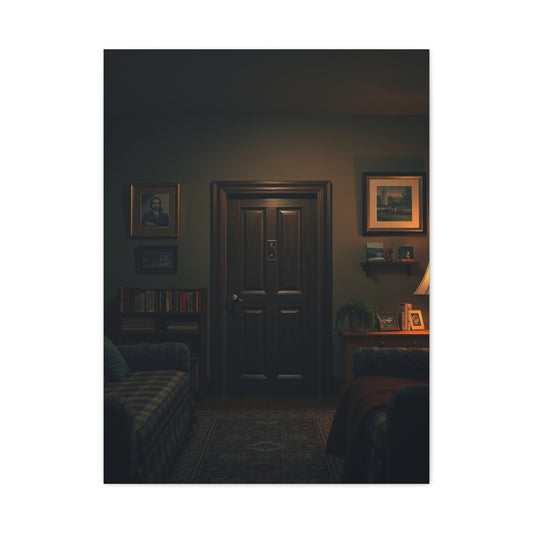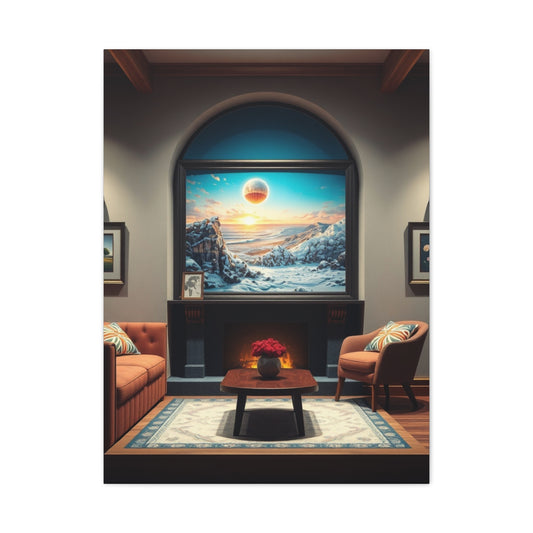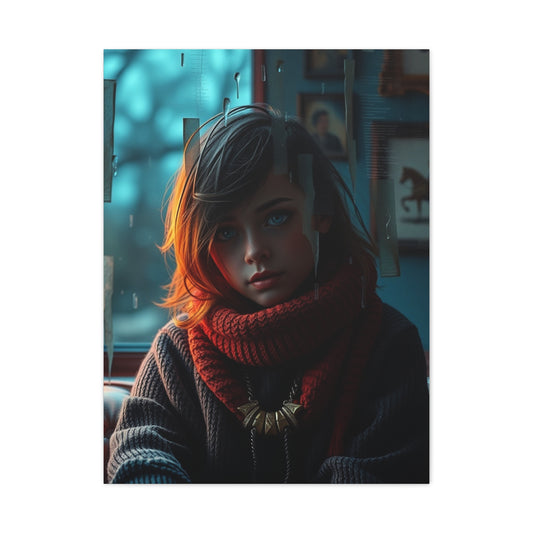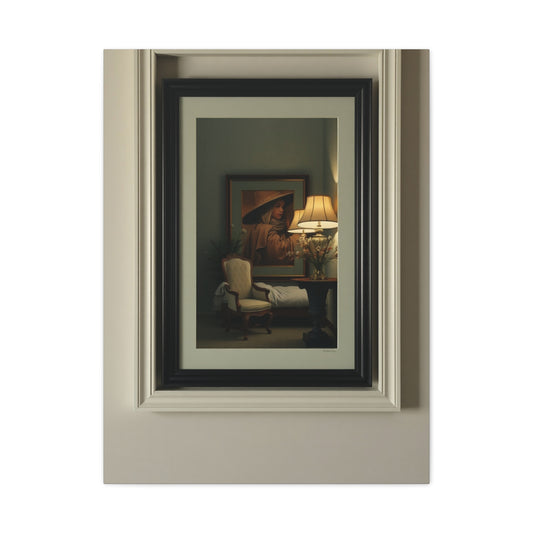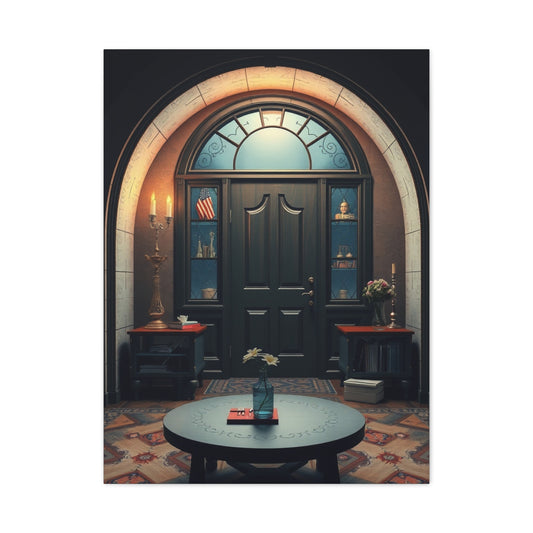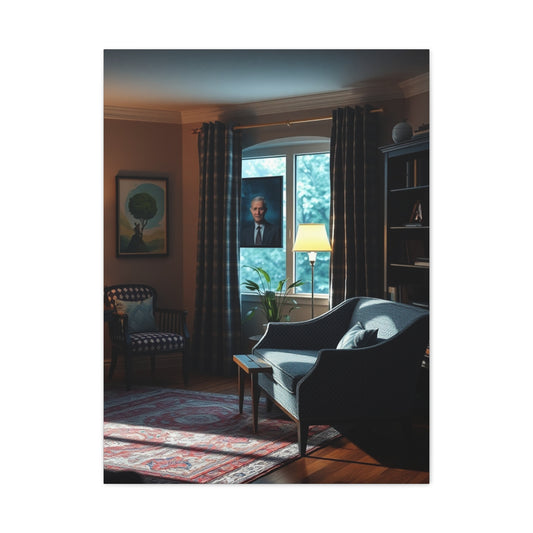-
Home Alone Art Luxury Canvas Wall Art & Canvas Print
Regular price From $141.23 USDRegular priceUnit price per -
Masterpiece Home Alone Art Vision Wall Art & Canvas Print
Regular price From $141.23 USDRegular priceUnit price per -
Vision Home Alone Art Art Wall Art & Canvas Print
Regular price From $141.23 USDRegular priceUnit price per -
Supreme Home Alone Art Collection Wall Art & Canvas Print
Regular price From $141.23 USDRegular priceUnit price per -
Home Alone Art Supreme Canvas Wall Art & Canvas Print
Regular price From $141.23 USDRegular priceUnit price per -
Collection Home Alone Art Art Wall Art & Canvas Print
Regular price From $141.23 USDRegular priceUnit price per -
Home Alone Art Refined Canvas Wall Art & Canvas Print
Regular price From $141.23 USDRegular priceUnit price per -
Home Alone Art Supreme Gallery Wall Art & Canvas Print
Regular price From $141.23 USDRegular priceUnit price per -
Elite Home Alone Art Vision Wall Art & Canvas Print
Regular price From $141.23 USDRegular priceUnit price per
Home Alone Art Ideas for Creating a Comfortable and Inviting Space
Designing a home is not merely about filling it with furniture or art; it is about cultivating spaces that offer solace and reflect the essence of your personality. One of the most transformative approaches to achieving this is by carving out a cozy nook within your living area. This space can be a sanctuary where the day’s cacophony fades into quietude, and you can immerse yourself in your favorite activities, whether that be reading, journaling, meditating, or simply reclining with a cup of tea.
When establishing a cozy corner, the location is paramount. Seek a section of your home that is relatively quiet and suffused with natural light. A spot near a window can invigorate the area with sunlight during the day while offering a glimpse of the ever-changing outdoor scenery. Incorporating a comfortable chair is essential, preferably one with ergonomic support, so that prolonged periods of sitting do not become a strain on your body. Add a soft, plush rug beneath your feet to ground the area in warmth and tactile comfort. A side table can provide a functional yet aesthetic touch, serving as a perch for your books, a steaming cup of tea, or even a small vase of freshly cut blooms.
Lighting is the linchpin in creating an inviting atmosphere. Layered illumination, such as a floor lamp accompanied by string lights or a small table lamp, can evoke a sense of intimacy and tranquility. The interplay of shadows and soft light enhances the cozy aura, making the corner not just a visual pleasure but also an emotional retreat. Small additions like a throw blanket and an array of cushions contribute layers of texture and warmth, enriching the sensory experience and making the space more alluring.
To further personalize this corner, consider introducing elements that resonate with your individuality. A stack of books with well-worn spines, a small potted plant with verdant leaves, or a piece of art that inspires reflection can transform the nook from a mere functional space to a sanctuary of personal expression. The subtle details—such as a delicate incense burner or a small collection of candles—can heighten the sense of serenity, enveloping the area in a gentle, olfactory ambiance that soothes the mind.
Seasonal and Festive Accents
The passage of seasons offers abundant opportunities to infuse your home with new vibrancy and charm. Seasonal decoration is not merely a superficial embellishment but a ritual that nurtures joy, nostalgia, and a sense of connection to time’s cyclical rhythm. Whether celebrating a traditional holiday, observing a cultural festivity, or simply embracing the aesthetic of a particular season, thoughtfully curated decor can transform a home’s mood.
During the winter holidays, for instance, a coniferous tree adorned with lights and ornaments can serve as a central focal point. Complementary elements like garlands, wreaths, or delicate fairy lights woven along shelves or mantels add depth and sparkle. Similarly, the thoughtful placement of candles or lanterns can introduce a warm, flickering ambiance that contrasts with the winter chill. For other seasonal celebrations, such as autumn harvest or spring bloom, consider integrating natural elements like pumpkins, dried foliage, or fresh blossoms to evoke the atmosphere of the season.
Color palettes play an integral role in achieving cohesive seasonal decor. By selecting a restrained combination of colors, one can avoid visual dissonance and cultivate a sense of harmony throughout the room. Classic reds and greens may dominate winter festivities, while muted earth tones or vibrant pastels can evoke autumnal or springtime moods. Beyond color, the integration of texture—through textiles, woven baskets, or hand-crafted ornaments—adds dimension and sensory appeal.
Seasonal decor also offers the opportunity for experimentation and creative play. For example, handmade decorations crafted from recycled or found materials not only reduce environmental impact but also imbue the space with a story and uniqueness. By rotating decor according to the season, a home can continuously feel rejuvenated and reflective of the current time of year, making everyday living an experience intertwined with beauty and mindful observation.
Breathing Life with Indoor Plants
Incorporating indoor plants is a strategy that simultaneously elevates aesthetics and promotes well-being. The presence of greenery in living spaces fosters tranquility, improves air quality, and introduces organic textures that soften architectural lines. Plants, whether small succulents or larger leafy varieties, act as living art, offering continuous visual and olfactory delight.
When selecting plants, opt for varieties that harmonize with your lifestyle and spatial conditions. Low-maintenance species like snake plants, pothos, or spider plants are particularly suitable for indoor environments, thriving with minimal attention while contributing to a verdant atmosphere. Placement is key: positioning plants near natural light sources encourages robust growth, while hanging planters or wall-mounted containers maximize vertical space and introduce an element of unexpected design.
The arrangement of plants can significantly impact the perception of a room. Grouping multiple plants can create the sensation of a mini indoor oasis, where varying heights, leaf shapes, and textures interact to form a dynamic tableau. Consider complementing plants with decorative containers—ceramic pots, woven baskets, or metal planters—that resonate with your overall decor aesthetic, adding subtle layers of sophistication and individuality.
In addition to visual appeal, plants can serve functional purposes. Certain varieties help purify the air, reduce ambient toxins, and even influence mood by providing a calming presence. By thoughtfully integrating greenery, a home can become not only more beautiful but also more healthful, offering a restorative refuge from the hectic cadence of daily life.
Crafting a Gallery Wall
A gallery wall is an exceptional method for merging personal expression with interior design. This arrangement allows you to showcase a variety of art, photographs, and mementos in a cohesive display that transforms a blank wall into a narrative canvas. The process encourages curatorial thinking, where balance, contrast, and thematic continuity converge to create visual intrigue.
Start by gathering a selection of frames that vary in size and style. The interplay between ornate, minimalist, and eclectic frames can produce a layered, textured effect that draws the eye. Lay out the collection on the floor to experiment with composition before committing to wall placement. This practice prevents haphazard arrangement and enables deliberate visual flow.
In curating the content of the gallery wall, consider incorporating diverse mediums—paintings, sketches, prints, and photographs—each contributing distinct aesthetic qualities. Harmonizing these disparate elements through color schemes, thematic links, or conceptual motifs creates coherence, ensuring that the display is not merely a collection but a thoughtful synthesis.
Lighting and placement enhance the gallery wall’s impact. Positioning the wall in a well-trafficked yet uncluttered area ensures it captures attention without overwhelming the room. Ambient or accent lighting can highlight textures, enhance colors, and cast subtle shadows that imbue the display with depth and dynamism.
Innovative Lighting for a Transformative Ambiance
Lighting is more than a functional necessity; it is an atmospheric architect that shapes the perception and emotional resonance of a space. The strategic orchestration of light can transform an ordinary room into a sanctuary of comfort, elegance, or creativity. A well-considered lighting scheme combines overhead illumination, ambient sources, and task-specific lighting to create layers that cater to both aesthetic and practical needs.
Ceiling lights provide foundational brightness, but relying solely on them often results in a flat or harsh environment. Layering floor lamps, table lamps, or sconces introduces depth and shadows, which evoke warmth and intimacy. Adjustable lighting, such as dimmer switches or smart bulbs, offers the flexibility to modulate brightness and color according to mood, season, or activity. For example, warm, amber-toned light can create a cocoon-like atmosphere ideal for reading or relaxation, while cooler white light may be more suitable for tasks requiring visual clarity.
Consider the placement of lighting relative to focal points and furniture arrangement. A floor lamp near a cozy chair illuminates reading material without casting glare across the room, whereas accent lighting can highlight a gallery wall, art piece, or architectural detail. The interplay between natural and artificial light is equally important; daylight filtering through sheer curtains can complement artificial sources and create a dynamic, ever-changing environment.
Layered lighting encourages a symphony of shadows and highlights, transforming walls, textures, and furnishings. Subtle interplay between light and dark corners creates depth and fosters a sense of sanctuary, making the room feel more expansive yet intimate at the same time. Additionally, the choice of light fixtures themselves contributes to the room’s design narrative: sculptural lamps, vintage pendants, or minimalist LED strips can act as art objects while fulfilling their functional role.
Themed Room Makeovers for Personal Expression
A themed room makeover allows a home to narrate a story, reflecting the inhabitant’s passions, memories, and stylistic preferences. Themes can be drawn from eras, geographical inspirations, natural elements, or abstract concepts. When executed thoughtfully, themed rooms offer both aesthetic cohesion and psychological comfort.
Vintage-inspired interiors, for instance, embrace antique furniture, patterned fabrics, and historical artifacts that evoke nostalgia and charm. Coastal or beach-themed rooms often utilize muted blues, sandy beiges, and seashell or driftwood accents to recreate the tranquil essence of the ocean. Minimalist interiors, in contrast, emphasize neutral tones, functional furniture, and uncluttered spaces that prioritize calm and clarity.
Thematic coherence is achieved by harmonizing color palettes, textures, and decorative elements. Accessories such as rugs, wall art, and throw pillows become critical in reinforcing the chosen motif. Attention to detail is essential; a well-curated space should feel intentional rather than contrived. Layering elements that echo the theme—soft lighting, ambient sounds, or tactile textures—enhances immersion, allowing inhabitants to inhabit a narrative space rather than simply occupy a room.
Transforming Everyday Items into Decorative Statements
Home decoration need not be synonymous with expense. Everyday objects, when repurposed creatively, can evolve into striking decor pieces. This approach encourages sustainability, ingenuity, and a tactile connection to one’s environment.
Old jars can metamorphose into elegant vases or candle holders, while stacks of books can form both functional and aesthetic elements, serving as side tables, pedestals, or focal points in shelving arrangements. Vintage suitcases, when reimagined as coffee tables or display stands, contribute both nostalgia and functionality, adding layers of storytelling to a room’s composition. Even textiles, from leftover fabric scraps to patterned scarves, can be transformed into cushions, wall hangings, or table runners, providing texture and individuality.
The aesthetic potential of ordinary items lies in their form, texture, and provenance. An asymmetrical vase, a weathered wooden crate, or a metallic tray carries history and character, distinguishing the space from mass-produced decor. By incorporating such objects with intention, the home evolves into a tapestry of curated memories, tactile sensations, and visual intrigue.
Window Treatments for Style and Privacy
Windows serve as portals to the outside world, but their treatment significantly affects both aesthetics and functionality. Curtains, blinds, and shades offer opportunities to modulate light, enhance privacy, and reinforce the room’s style. Heavy drapes introduce a sense of intimacy and softness, while minimalist blinds or sheers produce sleek, airy spaces.
The selection of window treatments should be informed by both practical and aesthetic considerations. Bedrooms may benefit from thick drapes that block external light and provide a cocoon-like atmosphere, whereas living spaces might favor lightweight curtains that allow light diffusion while maintaining privacy. The color, pattern, and texture of window coverings contribute to the room’s visual narrative, complementing furniture, walls, and accent pieces.
Layering techniques, such as pairing sheer curtains with heavier drapes, can add depth and functionality. Sheers diffuse sunlight and soften the room’s ambiance during the day, while heavier drapes can be drawn at night for privacy and warmth. Decorative elements such as valances or ornamental rods offer additional avenues for aesthetic enhancement, contributing subtle sophistication without overwhelming the space.
Personalized DIY Crafts for Individuality
Personalized DIY crafts allow inhabitants to imprint their identity on the home, transforming spaces into intimate expressions of creativity and memory. The act of crafting engages both mind and hand, resulting in decor that carries a narrative beyond its visual appeal.
Simple yet meaningful projects include custom photo albums, scrapbooks, or hand-painted furniture. These creations not only decorate the home but also preserve personal stories, infusing the environment with emotional resonance. Pottery, whether functional or purely decorative, introduces tactile and visual texture, while painted signs or wall hangings contribute whimsy, humor, or inspiration.
Crafts can draw from personal hobbies or experiences, ensuring that the items are not merely ornamental but resonate with the inhabitant’s lifestyle. For instance, a painting enthusiast may create a series of abstract works for the walls, whereas a gardener might fashion botanical-themed art or terrariums. The inclusion of handmade elements fosters a sense of ownership and uniqueness, creating spaces that are both visually captivating and emotionally affirming.
Integrating Smart Home Devices for Convenience
Modern home decoration is increasingly intertwined with technology, and the integration of smart devices offers both practical and aesthetic benefits. Smart lights, thermostats, and security systems allow inhabitants to manage their environment with ease, controlling temperature, illumination, and safety from a central device.
Beyond functionality, smart home integration contributes to the overall atmosphere of a space. Adjustable lighting can complement decor schemes, and automated systems can regulate daily rhythms, enhancing comfort and efficiency. Smart speakers provide voice-activated control, enabling interaction with other devices while adding subtle auditory ambiance.
The thoughtful deployment of technology ensures that convenience does not compromise style. Concealed or aesthetically aligned devices maintain the room’s visual integrity, while the seamless functionality they provide augments the inhabitant’s experience of the space.
Balancing Practicality and Creativity
The intersection of lighting, thematic design, repurposed objects, window treatments, DIY crafts, and technology illustrates the holistic approach to home decoration. Each element, while independently significant, contributes to a cohesive narrative when orchestrated with intention. The home thus becomes a dynamic canvas, capable of evolving with the inhabitant’s preferences, needs, and seasonal changes.
Fostering an environment that balances aesthetic beauty with functional utility encourages mindfulness in daily life. Spaces curated with purpose and personality offer more than visual pleasure—they cultivate emotional sanctuary, support routines, and enhance overall well-being. By embracing creative approaches to lighting, personalization, and adaptive use of technology and everyday objects, the home transforms from a static setting into a vibrant, inhabitable artwork.
Maximizing Space with Innovative Storage Solutions
Effective storage is an essential aspect of home design, particularly in spaces where every square foot counts. Thoughtfully implemented storage solutions combine practicality with aesthetic appeal, helping maintain order while enhancing the overall ambiance of a room. Multifunctional furniture, vertical storage, and clever organizational systems allow a home to feel expansive and uncluttered, even in modest spaces.
Ottomans with hidden compartments, for instance, provide seating while concealing items such as blankets, books, or household essentials. Similarly, under-bed drawers utilize often-overlooked spaces, creating discreet storage for clothing, shoes, or linens. Shelves, whether mounted on walls or standing as part of a modular system, offer vertical solutions that free up floor space and draw the eye upward, adding a sense of height to the room. Baskets, bins, and containers help categorize belongings, reducing visual chaos and encouraging intentionality in storage habits.
Organizing effectively goes beyond simply stowing items. Clear containers allow for immediate visibility, while labeling ensures that everything has a designated place. The act of categorization can transform daily routines, making retrieval effortless and instilling a sense of calm. Storage solutions that marry form and function—beautifully designed bins, bespoke shelving, or artisan baskets—contribute to the room’s aesthetic, preventing utilitarian elements from disrupting the visual narrative.
Accentuating Interiors with Textiles
Textiles are among the most versatile and impactful tools in home decoration. They add tactile richness, visual interest, and color, creating layers that enhance comfort and style. From rugs and curtains to throws and cushions, textiles influence both the mood and functionality of a space.
Rugs can define zones within open-plan areas, anchor furniture arrangements, or simply introduce warmth to cold floors. The choice of material, pattern, and pile affects not only comfort but also acoustics, light reflection, and the room’s overall rhythm. Cushions and throws provide immediate adaptability, allowing homeowners to shift textures, colors, and shapes according to seasons, moods, or evolving design preferences.
Curtains are equally transformative. Beyond their role in privacy and light control, they introduce verticality and movement, softening harsh lines and framing windows as visual focal points. Layering fabrics—such as pairing sheer panels with heavier drapes—adds depth, flexibility, and nuance, allowing the same window to accommodate shifting light conditions and aesthetic priorities throughout the day.
Textiles also serve as conduits for individuality. Uncommon materials, intricate patterns, or hand-woven fabrics can inject personality and subtle sophistication. Mixing and juxtaposing textures—like a velvet cushion atop a jute rug or a knitted throw draped over a linen sofa—creates a layered, dynamic environment that feels curated yet effortless.
Reimagining Indoor Plants as Living Art
While indoor plants were briefly discussed previously, a deeper exploration reveals their transformative potential in both aesthetic and functional dimensions. Beyond adding greenery, plants introduce kinetic energy into a room through their growth patterns, swaying leaves, and seasonal changes. They can serve as sculptural elements, acoustic dampeners, or focal points that harmonize with furniture, lighting, and textiles.
Selecting the right plants involves considering growth requirements, spatial integration, and design coherence. Tall, architectural plants like fiddle leaf figs or monstera can punctuate corners and vertical spaces, while trailing varieties such as pothos or string-of-pearls soften shelves and walls. Grouping plants in clusters of varying heights and textures creates a microcosmic ecosystem, evoking a sense of natural abundance.
Planters themselves become integral design components. Ceramic, terracotta, metal, or woven containers can be chosen to complement or contrast with the surrounding decor. The interplay between plant form and container texture introduces subtle layers of sophistication, enhancing the overall visual narrative. Beyond aesthetics, these living installations contribute to well-being by improving air quality, reducing stress, and fostering a connection to nature.
Curating a Relaxing Reading or Meditation Corner
The concept of a cozy nook can be extended into multi-functional personal sanctuaries, combining the elements of comfort, light, and sensory detail. Creating a corner specifically for reading, journaling, or meditation allows a home to serve as both a refuge and a source of inspiration.
Begin with foundational elements such as a comfortable chair, chaise lounge, or floor cushions that provide ergonomic support. Layer soft textiles, including rugs, throws, and cushions, to introduce warmth and tactile richness. Lighting should be adjustable and atmospheric: a combination of task lighting for reading and ambient illumination for relaxation creates versatility.
Personal touches heighten the space’s emotional resonance. A curated selection of books, a small potted plant, or an artwork that evokes calm contributes to the corner’s individuality. Incorporating scent through candles, essential oil diffusers, or fresh flowers can further elevate the sensory experience, transforming the area into a multisensory retreat that engages sight, touch, and smell.
Such corners are not confined to large spaces. Even compact apartments can accommodate intimate nooks through creative use of alcoves, window seats, or corner shelving. The key lies in harmonizing proportion, texture, and light to foster a sense of enclosure and comfort without compromising openness or flow.
Personalized DIY Crafts for Functional Decoration
DIY crafts are not merely decorative—they can serve practical purposes while reinforcing personal expression. Handmade elements such as painted furniture, customized shelving, or crafted storage boxes merge artistry with utility.
For example, upcycling an old cabinet with fresh paint and ornate handles transforms a utilitarian object into a statement piece. A handmade photo collage or framed sketch collection adds narrative richness while providing visual interest. Even small-scale crafts, like decorative trays, hand-stitched pillows, or bespoke coasters, introduce unique textures and colors that subtly shift a room’s atmosphere.
The creative process itself fosters mindfulness and intentionality. Engaging with materials, experimenting with patterns, and constructing objects imbues a sense of accomplishment and ownership. Consequently, DIY elements create a layered environment that reflects both aesthetic preferences and personal narrative, bridging the gap between functionality and individuality.
Harmonizing Elements for a Cohesive Space
The interplay between storage, textiles, plants, personal nooks, and DIY crafts underscores the importance of intentional curation. Each element contributes independently but gains significance through harmony with the whole. For instance, the softness of a rug complements the tactile allure of cushions, while plants juxtapose structural furniture with organic fluidity. Strategic lighting and window treatments further modulate perception, uniting disparate pieces into a cohesive, inhabitable artwork.
Cohesion is achieved through recurring motifs, complementary color palettes, and balanced proportions. Patterns, textures, and materials should dialogue rather than compete, ensuring that each piece enriches rather than overwhelms. A harmonious space allows the inhabitant to navigate effortlessly, fostering both physical comfort and emotional well-being.
Creating a Sanctuary Through Sensory Awareness
An advanced approach to home decoration emphasizes sensory orchestration. Beyond visual appeal, a thoughtfully designed space engages touch, sound, and scent to create a holistic experience. Soft textiles invite tactile interaction, ambient lighting shapes mood, and indoor plants contribute olfactory subtlety. Gentle auditory elements—like background music or water features—can further enhance the environment.
Such multisensory attention transforms a home from a static backdrop into a living sanctuary. Spaces designed with sensory awareness encourage mindfulness, relaxation, and a deeper connection to the immediate surroundings. Each corner, object, and texture becomes part of an immersive narrative, fostering a sense of belonging and contentment.
Elevating Your Home with Smart Devices
The modern home is increasingly intertwined with technology, yet smart devices can do more than enhance convenience—they can subtly transform the ambiance and rhythm of a living space. From intelligent lighting systems to programmable thermostats and integrated speakers, technology allows inhabitants to tailor their environment with precision and grace.
Smart lighting, for instance, extends beyond mere illumination. Adjustable color temperatures, dimming capabilities, and scheduled routines create a dynamic atmosphere, adapting to the time of day, activity, or mood. Warm amber tones can foster intimacy during evening relaxation, while cooler whites may enhance concentration or energize a workspace. The integration of smart bulbs into decorative fixtures ensures that technology remains visually harmonious, blending seamlessly with lamps, pendants, or sconces.
Thermostats provide similar advantages, offering remote temperature control that enhances comfort while promoting energy efficiency. Combined with sensors, smart thermostats can anticipate patterns and adjust settings automatically, ensuring that a home is always inviting without manual intervention. Security cameras, smart locks, and motion detectors introduce an additional layer of reassurance, granting both functional utility and peace of mind.
Beyond convenience, smart devices can contribute to the home’s aesthetic coherence. Concealed wiring, minimalist designs, and discreet placement preserve visual integrity, while voice-controlled systems reduce the need for visible remotes or switches. Integrated audio solutions can envelop a room in ambient sound, whether music, white noise, or nature-inspired recordings, further enriching the sensory experience and complementing the home’s design narrative.
The Subtle Art of Gallery Walls
Gallery walls are among the most compelling methods to personalize interiors, offering both visual richness and narrative potential. A well-curated gallery wall transforms blank surfaces into a tapestry of memories, aesthetics, and creative expression. Unlike a single statement piece, a gallery wall creates rhythm, movement, and depth, engaging the eye and inviting contemplation.
The process begins with selection: frames of varying sizes, materials, and finishes create contrast while maintaining harmony. Artworks may include photographs, sketches, prints, or mixed-media pieces, each contributing a distinct texture and story. Planning the arrangement on the floor before mounting ensures balance and prevents haphazard displays. Aligning elements with a consistent spacing or thematic anchor fosters cohesion and visual flow.
Lighting accentuates the gallery’s impact. Spotlights, track lighting, or indirect ambient illumination bring out textures, enhance colors, and create subtle shadows, transforming the wall into a dynamic focal point. Thematic considerations—such as monochromatic color schemes, shared subject matter, or complementary frames—tie disparate pieces into a unified narrative. This curated approach allows the gallery wall to function as both decorative art and a window into the inhabitant’s identity.
Seasonal and Festive Enhancements
The cyclical rhythm of seasons provides abundant opportunities to refresh a home’s aesthetic. Seasonal decoration is an art of subtle transformation, wherein color palettes, textures, and motifs evolve to reflect temporal changes and celebrations. This practice fosters a connection to the natural world while imbuing interiors with anticipation, warmth, and seasonal charm.
Winter festivities, for example, benefit from rich hues, layered textures, and ambient illumination. A centerpiece such as a decorated tree, garlands, or a festive mantel can anchor the space, while small details like hand-crafted ornaments, candles, and wreaths infuse the room with intimacy. Autumnal designs might employ natural elements—dried leaves, pumpkins, or warm-toned textiles—creating a cozy and grounded atmosphere. Spring and summer themes often emphasize lightness and airiness, using pastel colors, fresh flowers, and airy fabrics to evoke rejuvenation.
Harmonizing colors and textures is essential for maintaining balance. A consistent palette prevents visual chaos, while thoughtful layering introduces depth and sophistication. Incorporating elements such as handmade crafts or upcycled materials can also introduce personality and sustainability, ensuring that seasonal decoration remains distinctive and meaningful.
Combining Textiles and Lighting for Ambience
The interplay between textiles and lighting is a subtle yet powerful tool in shaping a home’s atmosphere. Soft fabrics—curtains, cushions, throws, and rugs—diffuse light, soften edges, and introduce warmth, while strategically placed lighting highlights textures and enhances spatial depth.
Layered lighting can complement textured fabrics in multiple ways. For instance, light filtered through sheer curtains produces gentle diffusion, casting delicate shadows on rugs or upholstery. Accent lamps can illuminate wall hangings, patterned textiles, or plants, creating pockets of visual interest. By varying intensity, hue, and direction, lighting can transform familiar fabrics into dynamic focal points, enriching the room’s narrative and elevating its sensory appeal.
Mixing textures—plush velvets, coarse weaves, smooth linens—creates contrast and tactile intrigue. The combination of soft textiles with reflective or ambient lighting produces a multidimensional environment that invites both visual engagement and physical interaction. In this manner, textiles and illumination act in concert, transforming functional elements into instruments of aesthetic sophistication.
Personalized DIY Projects in the Smart Home Era
Integrating DIY crafts within technologically enhanced homes offers a compelling blend of tradition and modernity. Handmade items provide tactile warmth and individuality, balancing the precision and efficiency of smart systems.
Consider painted furniture, custom shelving, or handcrafted decorative elements as counterpoints to sleek, automated devices. A DIY photo collage displayed alongside smart lighting that changes color to match mood or time of day exemplifies the seamless marriage of personal creativity and technological convenience. Pottery, woven items, or hand-sewn textiles can soften the sometimes clinical precision of smart devices, ensuring that the home remains both technologically advanced and intimately human.
The act of crafting is as important as the final product. Engaging in DIY projects fosters mindfulness, intention, and emotional attachment to the home. When combined with the adaptability and responsiveness of smart devices, these handmade elements enhance the inhabitant’s experience, ensuring that the home is a harmonious interplay of innovation, comfort, and personal expression.
Seasonal Transitions and Emotional Resonance
Seasonal decoration, textiles, and lighting converge to influence the psychological experience of a home. The deliberate adaptation of interiors to temporal rhythms promotes a sense of rhythm, renewal, and emotional resonance. Warm textures, ambient illumination, and seasonal motifs create environments that respond to the passage of time and enhance emotional comfort.
For example, in autumn, soft throws, ambient lamps, and rustic natural elements foster introspection and coziness. In contrast, spring may bring lighter fabrics, increased daylight, and fresh greenery, evoking renewal and vitality. Through such seasonal modulation, the home becomes a responsive organism, attuned to both environmental cues and human emotional needs.
Creating Cohesion Through Layered Design
Layering is a fundamental principle that unites the varied elements explored in this part: lighting, textiles, DIY projects, seasonal enhancements, and smart technology. Layered design ensures that each component—whether visual, tactile, or functional—complements rather than competes with the others.
For instance, a gallery wall can be illuminated with adjustable accent lighting, flanked by textured curtains and accompanied by a carefully arranged cluster of indoor plants. Seasonal decorations subtly integrate into these layers, while smart devices adapt the environment to support mood, activity, or time of day. Layered design promotes coherence, aesthetic balance, and functional versatility, transforming a home into a living, breathing entity that evolves with its inhabitants.
The Psychological Dimension of Thoughtful Design
Ultimately, the integration of smart devices, gallery walls, seasonal decor, textiles, and DIY crafts is not merely an exercise in aesthetics. Thoughtful design shapes perception, behavior, and emotional well-being. Spaces that balance functionality with sensory richness support mental clarity, relaxation, and creativity.
The home becomes more than a shelter; it transforms into a sanctuary that nurtures identity, mindfulness, and comfort. The combination of tangible objects, lighting, natural elements, and technology cultivates an environment that responds to human needs while expressing individual style. This dynamic equilibrium between utility, beauty, and personal expression epitomizes the contemporary art of home decoration.
Crafting a Tranquil Bedroom Retreat
The bedroom is more than a space for rest; it is a sanctuary where relaxation, introspection, and restorative sleep converge. Designing a bedroom that nurtures these qualities involves careful consideration of comfort, lighting, color, texture, and personal expression.
A supportive mattress forms the foundation of restful sleep, while pillows tailored to individual needs enhance alignment and comfort. Bedding, including duvets, sheets, and throws, should combine tactile softness with aesthetic appeal. Layered textiles—crisp sheets under a plush duvet and accented with cushions or a textured throw—create both visual depth and a luxurious sense of comfort.
Color palettes influence mood significantly. Muted, calming hues such as soft blues, pale grays, and neutral tones foster relaxation, whereas warmer accents like muted terracotta or gentle amber can add intimacy without overstimulation. Lighting should be adjustable: bedside lamps or wall sconces provide localized illumination for reading, while soft ambient lighting sets a tranquil overall tone. Consider integrating a diffuser with essential oils or subtle aromatherapy, enhancing the room’s sensory environment and promoting restful sleep.
Designing Multifunctional Personal Corners
Beyond the bedroom, personal corners throughout the home provide spaces for reflection, creativity, and quiet enjoyment. These nooks may be used for reading, journaling, meditation, or simply pausing to appreciate one’s surroundings.
Selecting the ideal location is critical. A quiet corner with access to natural light is preferable, although even smaller spaces can be transformed with a thoughtful arrangement. Furnishings should prioritize comfort and ergonomics: a supportive chair, chaise, or floor cushions provide a foundation, while soft rugs, throws, and pillows introduce tactile warmth.
Incorporating personal items heightens the space’s meaning. A stack of cherished books, a favorite plant, or artwork that evokes inspiration transforms a simple nook into an intimate sanctuary. Ambient lighting, such as floor lamps or string lights, enhances the mood, while sensory elements like a subtle fragrance, gentle music, or tactile textiles contribute to a holistic retreat. These personal corners, whether grand or modest, anchor the home emotionally, offering refuges that nurture creativity, calm, and contemplation.
Harmonizing Seasonal and Permanent Decor
An elegant home strikes a balance between enduring design elements and adaptable seasonal touches. Permanent features—furniture, built-in shelving, flooring, and primary color schemes—provide structural and visual stability. Seasonal accents, including textiles, ornaments, greenery, and curated accessories, introduce novelty, freshness, and alignment with temporal rhythms.
By harmonizing these elements, the home maintains coherence while remaining responsive to changing moods and occasions. Seasonal decor can be subtle—rotating cushions, throws, or table accents—or more pronounced, such as holiday-specific ornaments, wreaths, or themed lighting. The key is to integrate these additions seamlessly, ensuring that they enhance rather than disrupt the overarching design narrative. This approach allows inhabitants to experience the emotional and aesthetic benefits of seasonal change while preserving a sense of continuity and cohesion.
Accentuating Spaces with Textures and Layers
The tactile dimension of home decoration is often underappreciated, yet textures and layered materials profoundly affect perception and comfort. Combining smooth surfaces with rough, plush with coarse, and matte with reflective elements generates visual intrigue and a sense of depth.
Rugs, throws, and cushions offer immediate opportunities for layering, creating warmth underfoot, and softening furniture edges. Wall treatments, such as tapestries, textured paint, or paneling, contribute vertical interest. Even small details like decorative trays, vases, or woven baskets provide subtle tactile contrast. Layered design encourages exploration, inviting inhabitants to engage with the space both visually and physically, enhancing comfort, curiosity, and a feeling of intentionality.
Incorporating Plants for Balance and Vitality
Indoor plants are not mere decorative flourishes; they contribute structural, sensory, and psychological benefits. A well-placed plant softens hard lines, introduces organic movement, and provides subtle color variation. Grouping plants by height, texture, or container type creates a dynamic focal point that adds life and vitality to interiors.
Certain plants offer functional benefits as well, including air purification and stress reduction. Varieties like snake plants, spider plants, or ferns are resilient and adapt to indoor conditions, allowing for easy integration. Display techniques, such as hanging planters, wall-mounted installations, or tiered arrangements, maximize spatial efficiency while providing visual interest. By incorporating greenery thoughtfully, the home becomes a harmonious interplay of living elements, enhancing both aesthetic richness and well-being.
DIY and Personal Touches for Identity
Handmade elements imbue the home with individuality, narrative, and texture. Personalized DIY projects—such as hand-painted furniture, bespoke photo arrangements, or crafted decorative items—allow inhabitants to shape spaces according to their personality and experiences.
These items serve both functional and emotional purposes. A hand-crafted bookshelf may hold books, plants, or mementos while visually narrating the inhabitant’s creativity. Painted or sculpted objects introduce color and texture unique to the home, reflecting tastes, memories, and inspirations that cannot be replicated through mass-produced decor. The process of creation itself fosters mindfulness, allowing inhabitants to invest time, effort, and intention into the spaces they inhabit.
Strategic Use of Lighting for Emotional Effect
Lighting is a pervasive yet often subtle influence on mood and perception. Beyond general illumination, deliberate use of lighting can sculpt spaces, highlight features, and manipulate atmosphere.
Layered lighting—combining ambient, task, and accent sources—offers versatility. A dimmed overhead light may provide general visibility, while a focused lamp illuminates a reading nook, and indirect accent lighting highlights artwork or architectural details. Colored or adjustable lighting further personalizes experiences, subtly shifting the room’s emotional tone in accordance with activities or time of day. In bedrooms, soft, warm light promotes relaxation, while living areas may benefit from variable brightness to accommodate work, socializing, or leisure.
Integrating Smart Technology Discreetly
Smart devices, when integrated with intention, enhance both functionality and aesthetics. Automated lighting, climate control, and audio systems allow inhabitants to adapt their environment seamlessly without disrupting visual or spatial harmony.
Concealing cables, selecting devices with sleek designs, and harmonizing colors with furniture ensure that technology contributes unobtrusively to the room’s narrative. Smart thermostats, lights, and speakers can be programmed to complement routines, providing subtle cues that support comfort and well-being. The combination of responsive technology with handcrafted or natural elements strikes a balance between innovation and warmth, resulting in a home that is simultaneously efficient, beautiful, and humane.
Achieving Cohesion Across All Spaces
A home achieves true cohesion when disparate elements—lighting, textiles, plants, smart devices, seasonal decorations, and personal touches—interact harmoniously. Spatial planning, proportion, and color coordination are critical, as are considerations of flow and accessibility.
Repeated motifs, complementary textures, and curated contrasts unify rooms while allowing each to retain a distinct character. Layered arrangements encourage exploration, with visual or tactile surprises interspersed thoughtfully throughout the home. Cohesion is further enhanced when functional and decorative elements are integrated seamlessly, ensuring that practical features do not compromise beauty, and aesthetic accents support utility.
Cultivating Emotional Resonance Through Design
Ultimately, the art of home decoration transcends visual appeal, encompassing emotional resonance, comfort, and identity. Spaces curated with attention to light, texture, color, and personal significance foster mindfulness, relaxation, and inspiration.
Bedrooms become sanctuaries, personal corners offer respite and creativity, and living areas balance seasonal freshness with enduring style. Plants, textiles, lighting, and technology converge to form a dynamic, responsive environment that evolves with inhabitants’ needs. Handmade elements and personalized touches imbue the home with memory and narrative, reinforcing identity while enhancing sensory experience.
By cultivating spaces that are aesthetically coherent, functionally adept, and emotionally resonant, a home becomes more than a shelter; it becomes a sanctuary, a creative canvas, and a living extension of the individuals who inhabit it. Thoughtful integration of all these elements transforms everyday spaces into environments that support well-being, foster comfort, and celebrate personal expression.
Conclusion
Decorating a home is an intricate dance between functionality, aesthetics, and personal expression. From crafting cozy corners and personalized DIY projects to integrating smart technology, layered textiles, and verdant indoor plants, each element contributes to an environment that reflects individuality while enhancing comfort. Thoughtful lighting, gallery walls, and seasonal accents transform ordinary spaces into dynamic, emotionally resonant sanctuaries, while innovative storage solutions and multifunctional furniture maintain order without compromising style. By harmonizing textures, colors, and sensory elements, a home becomes more than a collection of rooms—it evolves into a living, breathing space that nurtures well-being, creativity, and relaxation. The process of intentional decoration encourages mindfulness, personal storytelling, and a deeper connection to one’s surroundings. Ultimately, a well-decorated home is both a canvas and a refuge, a place where beauty, utility, and individuality coexist in perfect balance, inviting inhabitants to live fully and authentically.

